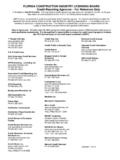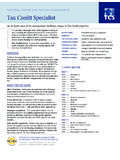Transcription of Credit valuation adjustments for derivative …
1 Applying IFRS. IFRS 13 Fair Value Measurement Credit valuation adjustments for derivative contracts April 2014. Contents In this issue: 1. Background .. 2. 2. What has changed? .. 2. 3. How do Credit adjustments work? .. 4. 4. valuation methods .. 5. 5. Data challenges .. 7. 6. Portfolio approaches and Credit mitigation arrangements .. 9. Collateral arrangements .. 9. Netting 9. Allocation of portfolio-level Credit adjustments .. 10. 7. Interaction with hedge accounting .. 11. Appendix: Credit risk modelling for derivatives .
2 13. Challenging market conditions following the economic crisis and the introduction of IFRS 13 Fair Value Measurement (IFRS 13). have highlighted the need to reflect Credit risk appropriately in the fair value of derivative contracts. This publication provides insight into some of the methods used in practice to determine valuation adjustments for Credit risk on all derivatives measured at fair value, except those for which a quoted price in an active market is available ( , over-the-counter (OTC) derivatives ). In addition, we briefly discuss some of the practical implications including data challenges, portfolio considerations and how these adjustments may affect hedge accounting.
3 Issues and questions are likely to be raised in the future as entities continue to apply IFRS 13. In addition, various groups, such as the International valuation Standards Council, are developing guidance in respect of Credit and debit valuation adjustments . We encourage readers to closely monitor developments. What you need to know All entities engaging in OTC derivative transactions must consider whether a fair value adjustment for Credit risk is required Two forms of Credit -related adjustments should be considered: a Credit valuation adjustment (CVA); and a debit valuation adjustment (DVA) to reflect the counterparty's or the entity's own default risk.
4 There is no specific guidance on the methods used to calculate CVA and DVA, which creates challenges in estimation. April 2014 Credit valuation adjustments for derivative contracts 1. 1. Background IFRS 13 became effective for annual periods commencing on or after 1 January 2013. IFRS 13 requires that fair value be measured based on market participants' assumptions, which would consider counterparty Credit risk in derivative valuations. Furthermore, the standard is explicit that the fair value of a liability should reflect the effect of non-performance risk, including, but not limited to, an entity's own Credit risk (as defined in IFRS 7 Financial Instruments: Disclosures).
5 As a result, IFRS 13 requires entities to consider the effects of Credit risk when determining a fair value measurement, by calculating a debit valuation adjustment (DVA) or a Credit valuation adjustment (CVA) on their derivatives . As no specific method is prescribed in the accounting literature, various approaches are used in practice by derivatives dealers and end users to Fair value must be estimate the effect of Credit risk on the fair value of OTC derivatives . measured based on The degree of sophistication in the Credit adjustment valuation method used by market participants' a reporting entity is influenced by the qualitative factors noted below.
6 Assumptions, which Estimation can be complex and requires the use of significant judgement which would consider Credit is often influenced by various qualitative factors, including: risk in derivative The materiality of the entity's derivative 's carrying value to its financial statements valuations The number and type of contracts for derivatives in the entity's portfolio The extent to which derivative instruments are either deeply in or out of the money The existence and terms of Credit mitigation arrangements ( , collateral arrangements in place).
7 The cost and availability of technology to model complex Credit exposures The cost and consistent availability of suitable input data to calculate an accurate Credit adjustment The Credit worthiness of the entity and its counterparties 2. What has changed? Although the requirements of IFRS 13 for non-performance risk in the valuation of liabilities are consistent with the prior fair value measurement guidance in IFRS, it is clearer that fair value includes such adjustments . IAS 39 Financial Instruments: Recognition and Measurement (IAS 39) refers to making adjustments for Credit risk if market participants would reflect that risk when pricing a financial instrument.
8 However, the adoption of IFRS 13 and its more explicit requirements for own Credit risk may result in a change in practice for some entities. Major bank defaults (and subsequent legal claims on outstanding derivative contracts) during the financial crisis highlighted the need to incorporate counterparty Credit risk into the valuation process. As a result, most market participants are able to rationalise the conceptual need for a CVA adjustment on their derivative assets and, in many cases, are already applying this adjustment .
9 2 April 2014 Credit valuation adjustments for derivative contracts However, many other financial institutions and most end-users have historically Definition of terms cited a number of reasons for not incorporating a DVA in their derivative liability positions, including;. Credit default swap (CDS). A Credit derivative whereby the The counterintuitive impact of recognising a gain in profit or loss as their seller of the CDS compensates the own creditworthiness deteriorates buyer in the event of default or other specified Credit event based The difficulty or inability to monetise or obtain economic benefit from the on an underlying reference entity own Credit gain upon transfer or close out of the derivative liability or index.
10 The increase in systemic risk that can arise from hedging DVA. Credit support annex (CSA) That accounting standards are not explicit in requiring such an adjustment A legal document that regulates and market practice on booking such adjustments is mixed. the Credit support (collateral) for IFRS 13 is explicit that own Credit risk must be incorporated into the fair value derivative transactions and forms measurement of a derivative liability under the concept of an exit price (as part of an ISDA Master Agreement. opposed to the IAS 39 'settlement price').















